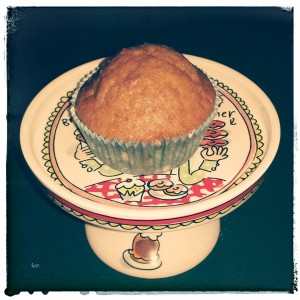
Monthly Archives: April 2014
Swedish for beginners


Cupcake vs. Muffin
People keep asking me what the difference between a muffin and a cupcake is. Some believe the frosting makes the difference, others think it’s the measurements. However I always try to explain them with two simple German words: Muffin=Kuchen (Cake) and Cupcake=Torte. But I learned that this is only half of the truth. The main difference is the method of preparing the dough. While for Cupcakes all ingredients are creamed together, the “wet” ingredients are mixed separately from the “dry” ingredients and only brought together very shortly before baking the Muffins. When creaming things together you try to beat in as much air as possible to “fluff” up while the muffin method relies on a raising agent (mostly baking soda).

I totally forgot to take a picture of my blueberry muffins. I took this recipe and made some variations. My brother left a 125g pack of blueberries in the fridge, but some of them were already over ripe. I tossed those, added a little dried super-fruit-mixture (dried cherries, cranberries and arionaberries) and replaced the baking powder by baking soda. I also added a spoonful vinegar with the berries as I once read that baking soda needs acid or at least other sour ingredients to react with in the dough, there again goes chemistry (:
After Brownies the Muffins seem to be the next recipe to reconcile… I am pretty curious what’s next!
